Simtokha Dzong Is A Historic Fortress In Bhutan To Explore In 2026
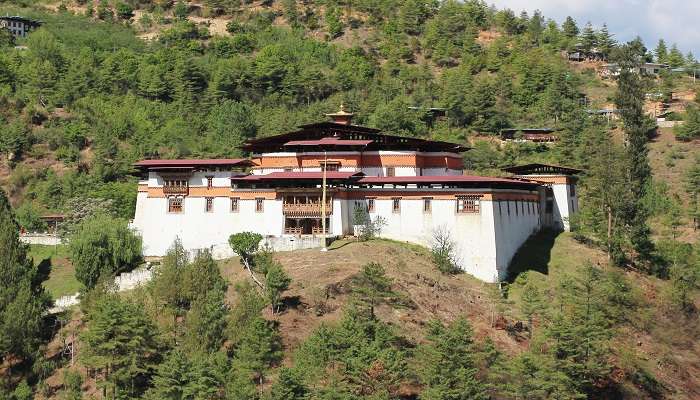
Simtokha Dzong, also called Sangak Zabdhon Phodrang or the ‘Palace of the Profound Meaning of Secret Mantras’, is an impressive fortress-monastery in Bhutan. The dzong was constructed in 1629 by Zhabdrung Ngawang Namgyal and is located on a spur about 5 km south of Thimphu on the ridge overlooking the valley. Simtokha Dzong is one of the oldest and most significant dzongs in Bhutan as it is the first of its kind. It now has one of the best Dzongkha language learning institutes and remains a place of learning and worship. It has been renovated recently, and the old-world feel has been retained while the building has been strengthened.
Simtokha Dzong
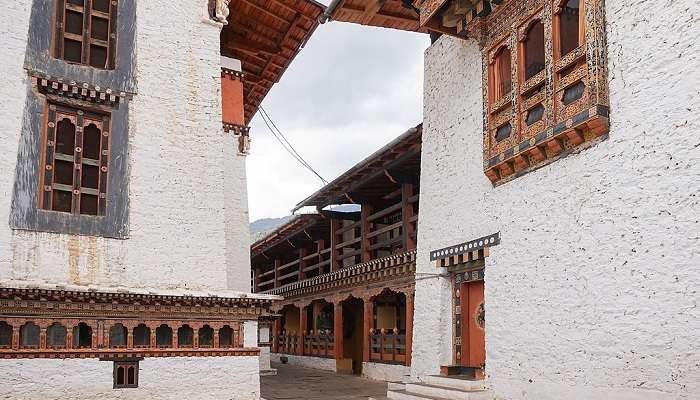
The history of Simtokha Dzong is as colourful as the architecture of the building. Constructed in 1629 by Zhabdrung Ngawang Namgyal, it was the first administrative and religious dzong. Namgyal was able to consolidate the kingdom of Bhutan around the fortress. Simtokha Dzong was attacked several times; the most severe attack occurred in 1630 when the Tibetans managed to capture the fortress. Nevertheless, the defenders of the dzong were able to retake it after a fire led to the roof’s collapse, which resulted in the death of the intruders. It has undergone several renovations and extensions over the centuries, and Japanese architects have done the latest refurbishment works. The dzong also represents a victory over a demoness from which it gets its name, ‘Simtoka’, meaning ‘demoness stone’.
Must Read: Tourist Places In Bhutan
Places To Visit Near Simtokha Dzong
Dzongs are integral to Bhutanese tourism, and the Simtokha Dzong is one of the most prominent. So if you are in the area, you can also round off your trip by visiting some of these places:
1. Thimphu
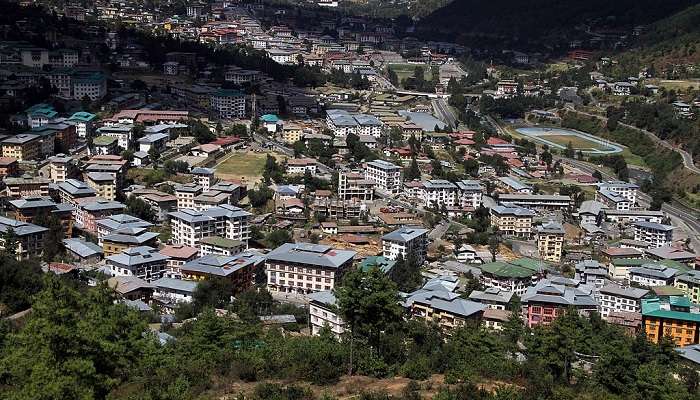
Thimphu, only 5 kilometres north of Simtokha Dzong, is Bhutan’s capital city and is replete with things to do. Tourists can visit the National Memorial Chorten, a stupa constructed in honour of the third king, Jigme Dorji Wangchuck. Tashichho Dzong, the government house, is also a significant attraction with beautiful structures. The local market on the weekend is an excellent way to get a feel for the city and its people as they sell fresh fruits and vegetables, hand-crafted items, and other local products. Thimphu is a city that blends the traditional and the modern and thus provides a good insight into Bhutanese culture and lifestyle.
- Days Needed: 2 days
- Entry Fee: Free entry
2. Dochula Pass
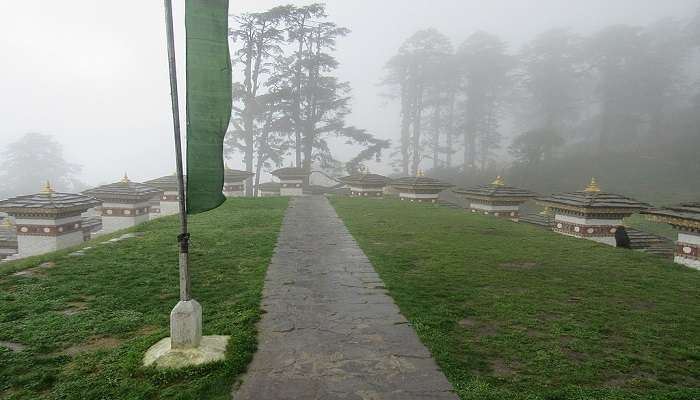
The Dochula Pass is located about 23 kilometres from Simtokha Dzong and is a mountain pass which provides spectacular views of the Himalayas. The pass is well-known for the 108 memorial chortens called the Druk Wangyal Chortens, constructed in memory of the Bhutanese soldiers who lost their lives in a military campaign. It is a photographer’s delight as the peaks of the Himalayas are visible on a clear day, and the mountains are capped with snow. The Dochula Pass also has the Dochula Druk Wangyel Festival, held annually in December. It showcases Bhutanese music and dance, which locals and tourists participate in.
- Days Needed: 2 days
- Entry Fee: Free entry
Suggested Read: Street Food In Bhutan
3. Punakha Dzong
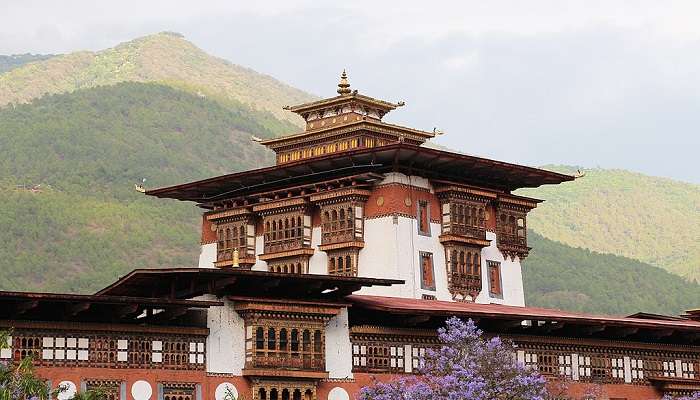
About 72 kilometres from Simtokha Dzong, Punakha Dzong is a beautiful fortress at the junction of the Pho and Mo Chhu rivers. This architectural wonder is one of the most photographed dzongs in Bhutan and is the winter home of the central monastic school. Constructed in 1637, it contains the relics of the southern Drukpa Lineage of the Kagyu school of Tibetan Buddhism. The wooden architecture of the dzong and the beautiful flowering jacaranda trees around it in spring make it very beautiful. Tourists can also take a walk to Punakha Suspension Bridge, one of Bhutan’s longest bridges.
- Days Needed: 1 day
- Entry Fee: 500 Nu
4. Paro
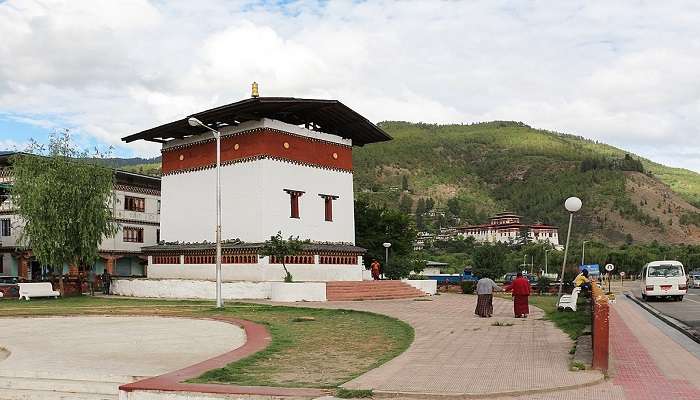
Paro is approximately 54 kilometres from Simtokha Dzong and is famous for the Taktsang Monastery, or Tiger’s Nest. This important shrine and place of worship is located on a cliff and attracts many tourists. Paro is also famous for Paro Dzong, a fortress-monastery, and the National Museum of Bhutan in the Ta Dzong watchtower. The beautiful streets, typical houses, and festivals, such as the Paro Tsechu, make the town cultural. Paro Valley is gorgeous, steeped in history, and a must-visit.
- Days Needed: 1 day
- Entry Fee: Free entry
Suggested Read: Bhutan Hill Stations
5. Wangdue Phodrang
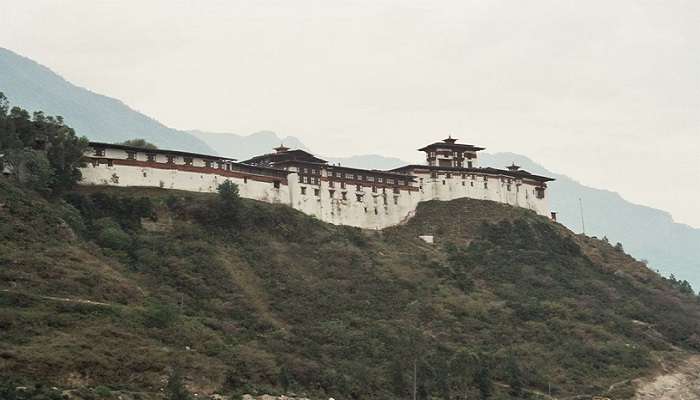
Wangdue Phodrang is located 45 kilometres away from Simtokha Dzong and is famous for its beautiful dzong and stunning views. The town’s dzong, situated on a hilltop overlooking the Punatsangchhu River, is being reconstructed after being burnt down in 2012. Wangdue Phodrang also serves as the entry point to the picturesque Phobjikha Valley, a glacial valley home to the black-necked cranes during winter. The valley has prospects for nature trails, bird watching and getting a glimpse of the Bhutanese countryside. The town itself is beautiful and calm, with amazing views and a very peaceful environment that is ideal for leisure and sightseeing.
- Days Needed: 1 day
- Entry Fee: 1000 Nu
How To Reach Simtokha Dzong
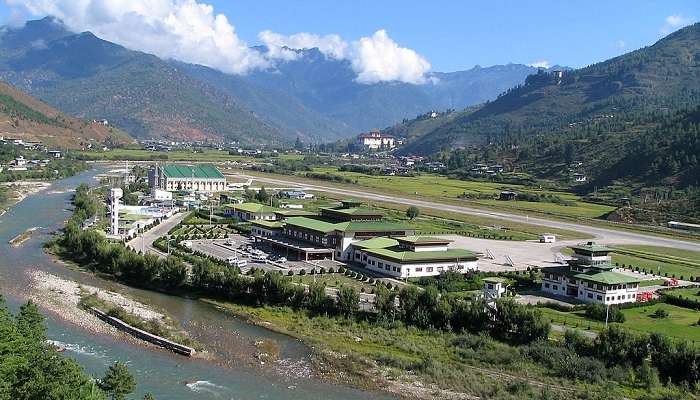
Bhutan enjoys connectivity; hence, you can easily go to Bhutan no matter where you are. Here are some ways how you can reach Simtokha Dzong:
By Air: The nearest airport to Simtokha Dzong is Paro International Airport, which is approximately 54 kilometres away from the Dzong. After reaching the airport, one can hire a taxi or board a bus to Thimphu.
By Road: The Simtokha Dzong is well connected by roads and can be easily reached by car. It is approximately 5 kilometres south of the capital city of Thimphu. Public transport and hired taxis are available from the Thimphu city centre to the dzong.
By Rail: Since Bhutan does not have a railway system, the nearest railway station is Hasimara in India. From there, one can hire a taxi or bus to Thimphu and then by road to Simtokha Dzong.
Further Read: Things To Do In Bhutan
One of the oldest dzongs in Bhutan, Simtokha Dzong is a place of historical, architectural, and religious importance. It is conveniently located near Thimphu, and the nearby places provide a better understanding of Bhutanese culture and landscape. Plan your trip to Bhutan and discover the beauty of the country, starting with the Simtokha Dzong.
For our editorial codes of conduct and copyright disclaimer, please click here.
Cover Image Credit: Bernard Gagnon for Wikimedia Commons
Frequently Asked Questions About Simtokha Dzong
What does Simtokha Dzong mean?
The word “Simtokha” is a variation of the name of a demoness “Simtoka”. This Dzong was constructed as a representation of victory over this demoness.
What is the age of Simtokha Dzong Bhutan?
The Dzong is 395 years old as of 2024, and is not just an architectural gem but also a symbol of Bhutanese spiritual devotion.
What is inside Simtokha Dzong for the visitors to see?
Old architecture, preserved historical artefacts, and deities are housed inside the Dzong for visitors to see.
Is there any charge that one has to pay to visit Simtokha Dzong?
No, the Dzong is open for all without any charges or fee, making it convenient for both locals and visitors to explore the historical and cultural significance of this place.
How many Dzong are there in Bhutan?
In total, there are 20 Dzongs in Bhutan overall; with each boasting distinct architectural style and historical importance.
People Also Read:
Trongsa Dzong Lhuentse Dzong Jakar Dzong
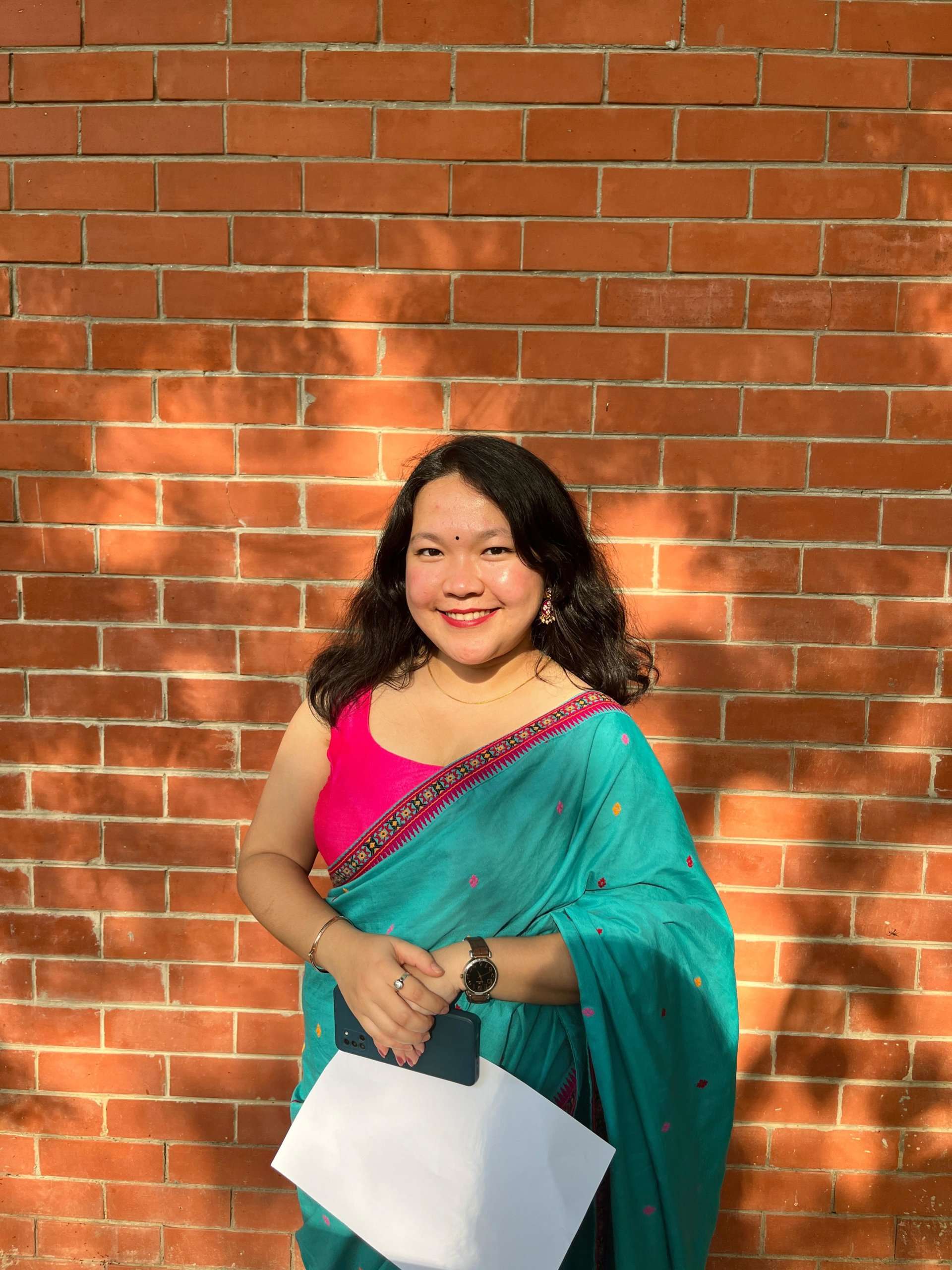
We all have to begin somewhere. This is where I start and I hope that my writings encourage you to begin. To new beginnings and conquering new places!











